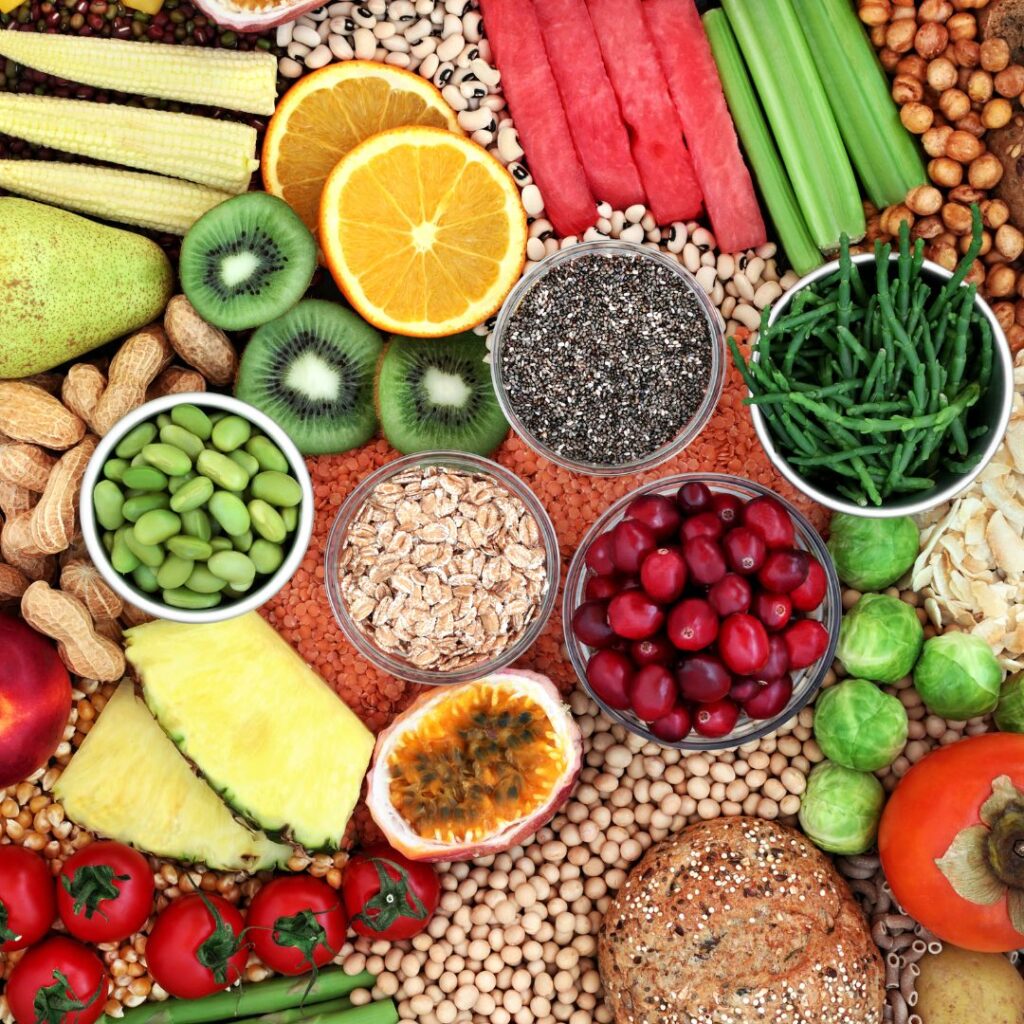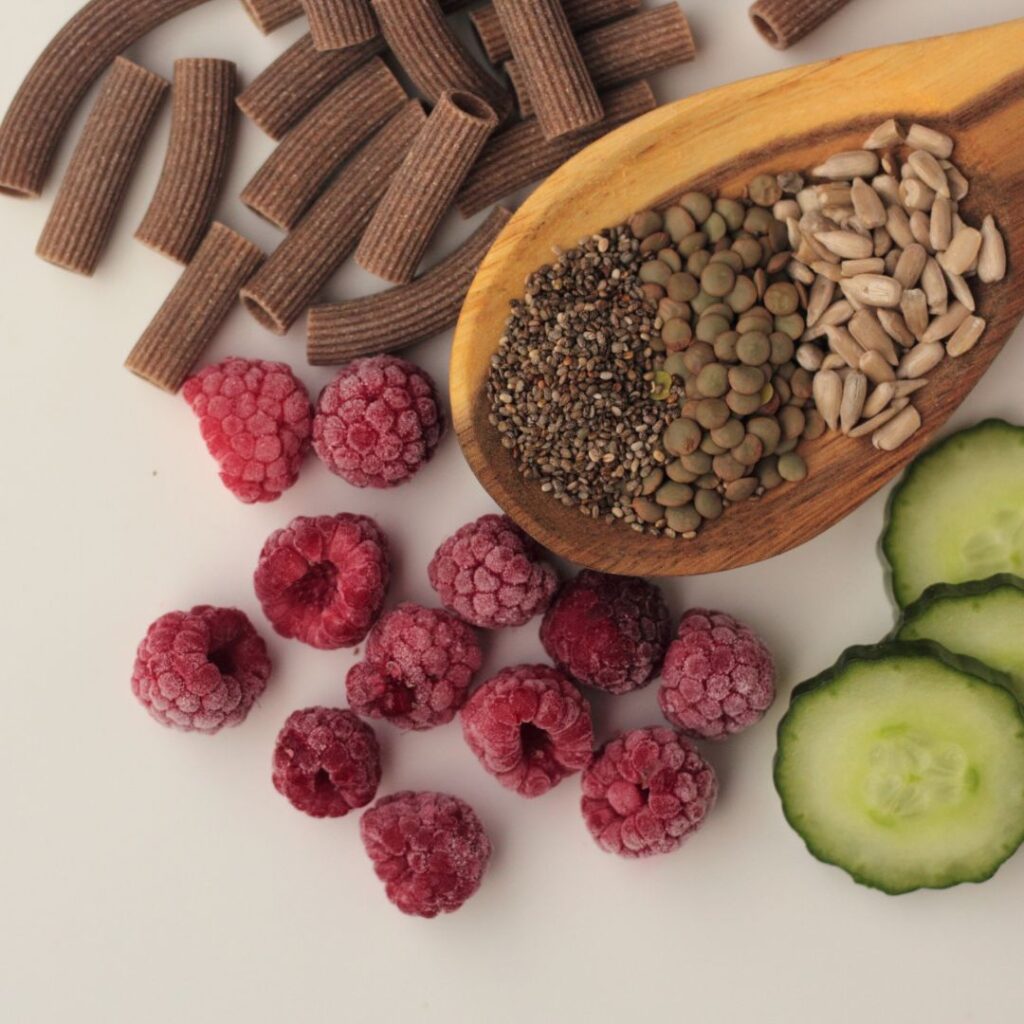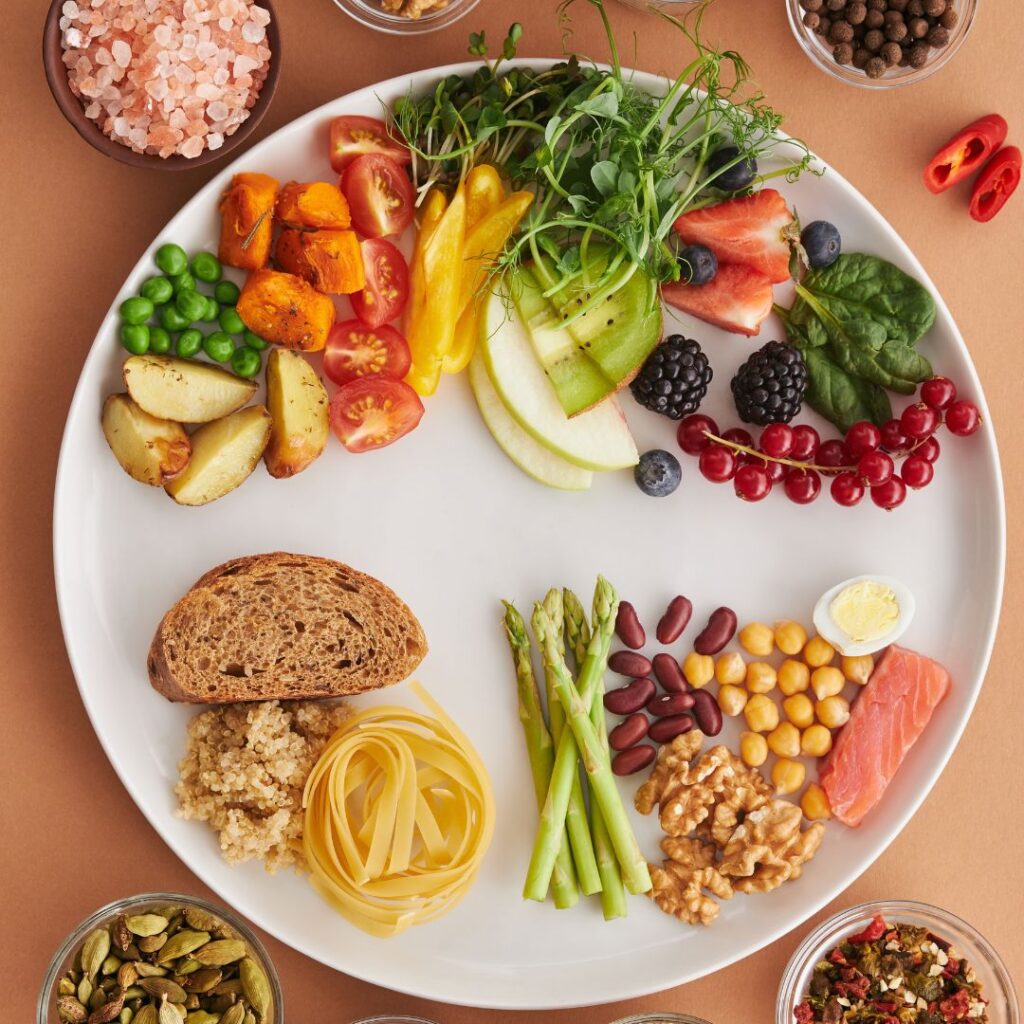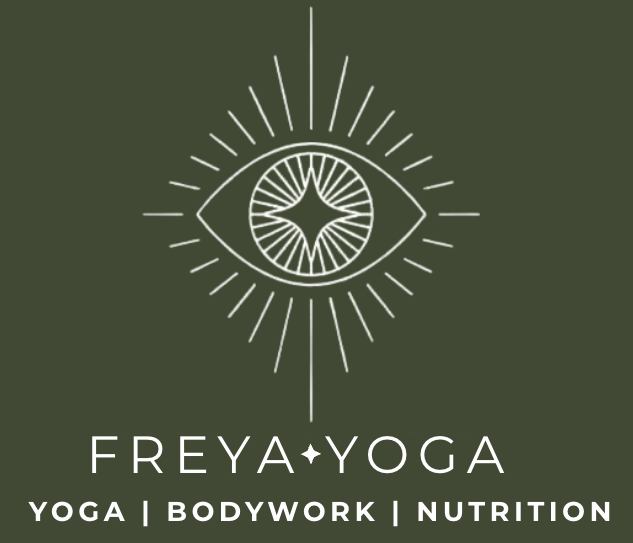What I Actually Eat as a Nutritionist
(And Why You Don’t Need More Rules — Just More Fibre)
Let me guess — you’ve seen the “What I Eat in a Day” videos, the detox drinks, the never-ending list of food rules.
And maybe part of you has wondered…
Should I be eating like that too?
I get it.
I’ve been there.
As a certified nutritionist — and someone who spent years tangled in restriction and diet culture — I now support my body in a very different way.
I eat in a way that’s nourishing, not punishing.
I don’t cut food groups.
I don’t count calories.
And I definitely don’t take nutrition advice from someone without qualifications or credentials.
Instead, here’s what I do focus on — and what I encourage my clients to come back to.
1. Meal Plans Can Be Helpful — But They’re Not the Whole Picture
For some people, especially in the early stages of building healthy habits, structure can be grounding.
Having a guide, a plan, or a few set meals can reduce decision fatigue and help you stay consistent.
But for many of us — especially those recovering from disordered eating or chronic dieting — meal plans can become another set of rules to follow (or break).
So rather than prescribing meals, I prefer to offer guiding principles and flexibility — the kind that supports you in learning to trust your body again.

2. Eat Fibre, Protein & Colour at Every Meal

Rather than obsessing over calories or strict rules, I ask myself:
-
Where’s the fibre? (Think: oats, seeds, lentils, leafy greens)
-
What’s my protein source? (Greek yoghurt, tempeh, eggs, chickpeas)
-
Where’s the colour? (The more diverse the plate, the better for your gut)
Most people aren’t getting nearly enough fibre.
In fact, according to the UK’s National Diet and Nutrition Survey, adults consume an average of 18g of fibre per day, while the recommended amount is 30g for anyone over 16【source】.
Fibre supports digestion, satiety, blood sugar regulation, hormone balance — and yes, even your skin.
3. Don’t Avoid Food Groups (Unless You Need To)
There’s no badge of honour for cutting carbs, sugar, or fat.
Unless you have a diagnosed intolerance or medical condition, removing entire food groups often does more harm than good — metabolically, mentally, and emotionally.
Instead of restriction, I aim for diversity and balance:
Healthy carbs like potatoes, whole grains, fruit
Fats from avocado, nuts, tahini, olive oil, butter
Proteins from legumes, dairy (I’m veggie), tofu, eggs
This is how I help my clients add more foods in — not take them away.

4. Don’t “Eat Clean” — Eat with Intention

Some days, I make a healthy dessert from cacao and dates.
Other days, I grab a chocolate bar from the shop without a second thought.
Some days, I prep a salad with 10+ plants in it.
Other days, I eat pizza at the beach with friends.
It’s not about “good” vs. “bad” food.
It’s about how the food makes you feel — physically, emotionally, energetically.
The shift for me was going from: “What should I remove?”
to: “What can I add that supports my body today?”
More fibre.
More protein.
More colour.
More joy.
More trust.
→ Want to See What I Stock in My Kitchen?
Instead of telling you exactly what I eat every day, I’ve created a free Grocery List PDF with everything I keep on hand — from gut-friendly staples to simple swaps for busy days.
[Download: My Go-To Grocery List for Energy, Fibre & Flexibility]
5. Take Advice from Trained Nutritionists — Not the Explore Page
Social media is full of well-meaning advice… and full-blown misinformation.
Before you try that no-carb diet, detox tea, or 1,200-calorie meal plan, ask:
Are they qualified, certified in nutrition, dietetics, or a related health profession?
Do they cite science, or just sell fear?
Does their advice sound sustainable, or stressful?
Credentials matter. So does compassion. And you deserve both.

6. Food Freedom Doesn’t Mean Chaos — It Means Connection

I used to follow every trend out there:
Cutting carbs. Fasting until noon. Juice cleanses. You name it.
Now, I follow something else: my body.
I still eat out. I still make spontaneous choices.
But I do it all from a place of connection, not control.
Some days I need grounding — so I lean into slow, warming foods.
Other days I want something light and vibrant — so I build a fresh, crunchy bowl.
And some days I simply eat something because I enjoy it — without guilt, shame, or justification.
That’s the beauty of intuitive eating.
It’s not about being perfect. It’s about being present.
Want Help Rebuilding Your Relationship with Food?
If you’re ready to ditch the rules but still want to feel energised, grounded, and supported — I’m here to help.
Through my 1:1 Nutrition Mentorship, I guide you in creating a way of eating that works for your body, your lifestyle, and your goals — no extremes, just support.
My Story
As someone who struggled with hormonal imbalance and a disordered relationship with food, studying nutrition helped me reframe nourishment. I now eat with variety, balance, and curiosity — not rules. And I help others do the same.
[Join the Newsletter] :
Thank you!
You will receive your welcome email pack soon.


